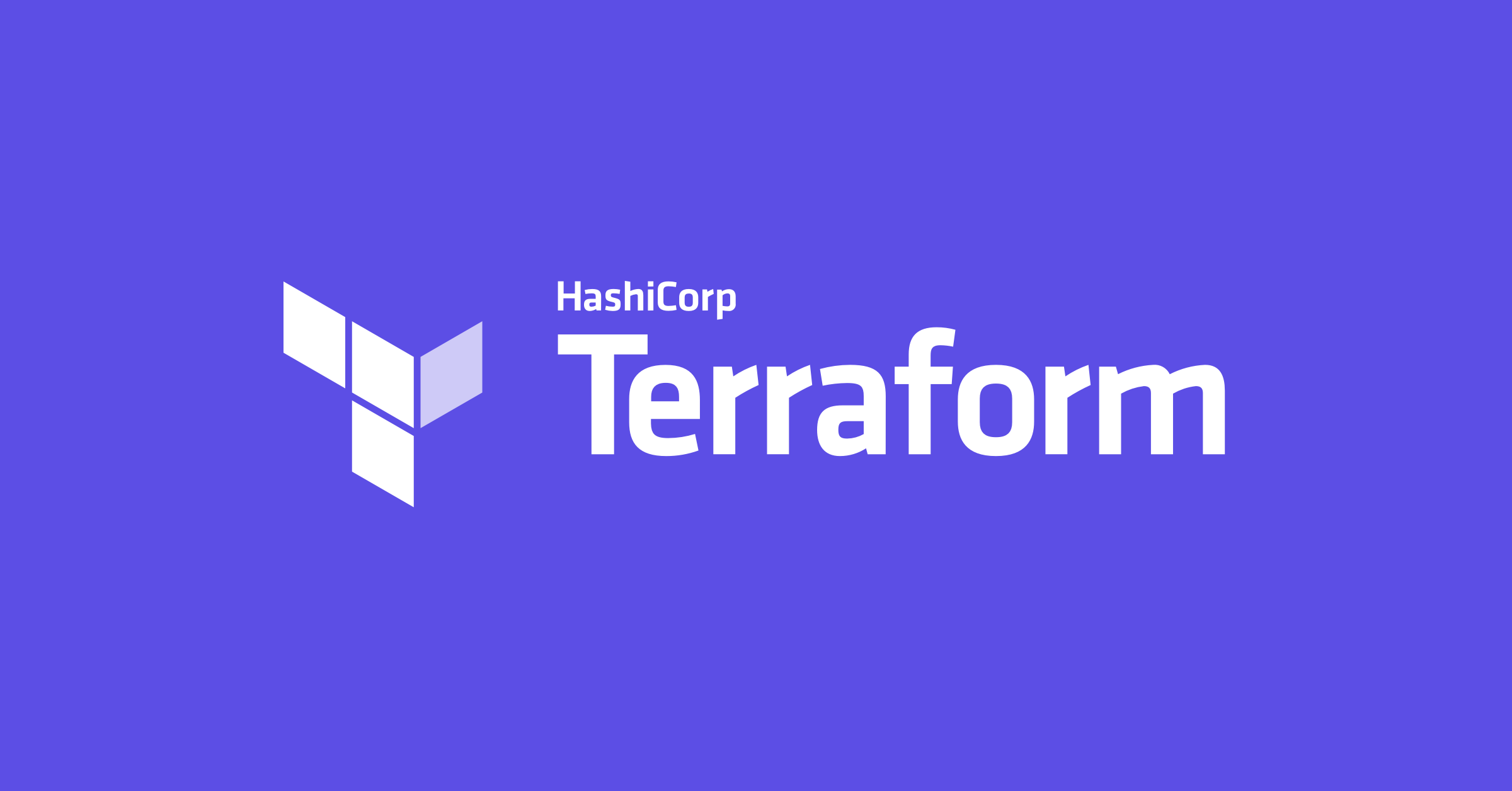Mastering Terraform Basics - Day 2
 Vikram
Vikram
Introduction to Terraform for Beginners
What is Terraform?
Terraform is an open-source tool created by HashiCorp that allows you to define, provision, and manage infrastructure using code. This approach, known as Infrastructure as Code (IaC), provides a way to automate and standardize the provisioning and management of infrastructure in a consistent, scalable manner. By defining your infrastructure in configuration files, you can automate the deployment of servers, databases, networking, and other resources across cloud providers like Amazon Web Services (AWS), Microsoft Azure, and Google Cloud.
Why Use Terraform?
Automation and Consistency: Terraform automates the provisioning of infrastructure, eliminating manual, error-prone tasks. Once your infrastructure is defined in code, you can create the same environment again and again with consistency.
Multi-Cloud Support: Terraform is cloud-agnostic, meaning it can interact with multiple cloud providers and services simultaneously. This is ideal for multi-cloud environments where your infrastructure spans different platforms.
Version Control for Infrastructure: With Terraform, you can use version control systems like Git to track changes to your infrastructure. Each change is recorded, so you can easily roll back if needed.
Collaboration: Terraform enables teams to collaborate on infrastructure management using the same tools and workflows they use for application development. You can share and reuse configuration files, ensuring consistency across environments (development, staging, production).
Efficient Resource Management: Terraform provides tools like execution plans and state management, which allow you to review proposed infrastructure changes and manage the current state of your infrastructure effectively.
Key Concepts in Terraform
To understand how Terraform works, it’s essential to learn a few fundamental concepts.
Configuration Files: Terraform uses plain-text files, typically with the
.tfextension, to describe the desired state of your infrastructure. These files contain resources and configurations written in HashiCorp Configuration Language (HCL). You define the resources (e.g., servers, databases, storage) in these files, and Terraform uses them to create or modify your infrastructure.Example:
provider "aws" { region = "us-west-2" } resource "aws_instance" "ec2Instance" { ami = "ami-0c55b159cbfafe1f0" instance_type = "t2.micro" }Providers: Providers are the plugins that allow Terraform to interact with different services and platforms, such as AWS, Azure, Google Cloud, or even SaaS applications like GitHub. Each provider has its own set of resources that Terraform can manage.
Resources: Resources are the components of your infrastructure that Terraform manages. These can include virtual machines (VMs), storage, databases, and networks. In the configuration file example above,
aws_instancerepresents an AWS EC2 instance.State: Terraform maintains a state file that tracks the current state of your infrastructure. This file helps Terraform determine the differences between your configuration and the actual resources, ensuring that only the necessary changes are made when you update your infrastructure. You can store state files locally or remotely in cloud storage, ensuring collaboration and consistency across team members.
Execution Plan: Terraform generates an execution plan when you run the
terraform plancommand. The plan outlines the changes Terraform will make to achieve the desired state described in your configuration files. This helps you review what will be created, modified, or destroyed before applying changes.Apply: After reviewing the execution plan, you use
terraform applyto execute the changes and provision the resources.Modules: Terraform configurations can be organized into modules, which are reusable packages of infrastructure resources. Modules help keep your configuration files organized and allow you to reuse common setups across multiple projects or environments.
Terraform Workflow: Step-by-Step
Let’s walk through a basic Terraform workflow, which involves creating and managing infrastructure using Terraform commands.
1. Install Terraform
To get started, you need to install Terraform on your local machine. Visit the official Terraform download page and download the appropriate version for your operating system.
If you come across any issues to install terraform on your machine, please comment on this post so that I can try to cover the installation process in upcoming posts if possible.
After installing, ensure Terraform is accessible from your terminal by running:
terraform -v
This command should display the installed version of Terraform.
2. Write Configuration Files
Create a new directory for your project and inside it, write your infrastructure configurations in .tf files. Here’s an example of a simple configuration that provisions an AWS EC2 instance:
provider "aws" {
region = "us-west-2"
}
resource "aws_instance" "example" {
ami = "ami-0c55b159cbfafe1f0"
instance_type = "t2.micro"
}
The
providerblock tells Terraform which cloud provider to use and in which region (here, AWS in theus-west-2region).The
resourceblock defines an AWS EC2 instance using theaws_instanceresource type, specifying the Amazon Machine Image (AMI) ID and instance type (t2.micro).
3. Initialize Terraform
Before you can start creating resources, you need to initialize Terraform. This downloads the necessary plugins (providers) to interact with the cloud or services defined in your configuration. Run the following command from your project directory:
terraform init
4. Plan Your Changes
After writing the configuration files, you can generate an execution plan to see what Terraform will do. The terraform plan command shows you a preview of the infrastructure changes that will be applied:
terraform plan
This command will output the resources Terraform plans to create, update, or destroy based on the current state and your configuration files.
5. Apply the Configuration
Once you’re satisfied with the plan, you can apply the changes to provision your infrastructure. Use the following command:
terraform apply
Terraform will ask for confirmation before applying the changes. Type yes to proceed. Terraform will then provision the resources according to your configuration.
6. Review the State
Terraform keeps track of the infrastructure it manages through a state file. You can inspect the state by using the terraform show or terraform state commands. The state file contains a mapping of your resources and their current state, allowing Terraform to manage updates effectively.
7. Destroy the Resources
If you need to delete the resources Terraform created, use the terraform destroy command:
terraform destroy
This will prompt you for confirmation before deleting the infrastructure.
Best Practices for Terraform
As you start working with Terraform, it’s important to follow best practices to ensure your configurations are scalable, maintainable, and secure.
Version Control Your Terraform Code: Store your Terraform configuration files in version control systems like Git. This allows you to track changes, collaborate with others, and roll back configurations if needed.
Use Remote State Storage: Store the Terraform state file in a remote backend like Amazon S3, Azure Blob Storage, or Google Cloud Storage for better collaboration and disaster recovery. Remote state ensures all team members are working with the same infrastructure state.
Use Modules: Break your Terraform configurations into modules. Modules encapsulate a set of resources, making them reusable across different projects or environments.
Leverage Variables and Outputs: Use variables to make your configurations more flexible and reusable. For example, rather than hard-coding values like instance types or AMI IDs, pass them as variables. Use outputs to expose specific values from your configurations (e.g., an instance’s public IP address) to other configurations or scripts.
Plan Before Apply: Always run
terraform planbefore applying changes to review what Terraform will modify, create, or destroy.Security Best Practices:
Avoid hardcoding sensitive information like access keys or passwords in Terraform files.
Use tools like Vault or AWS Secrets Manager to manage sensitive credentials.
We will be covering all the above topics one by one in depth with hands-on and we will be using AWS cloud for our infrastructure setup. So please do follow for more such updates.
Conclusion
Terraform is a powerful tool for managing infrastructure as code. Its declarative approach, multi-cloud support, and strong ecosystem make it an essential tool for organizations of all sizes. By learning and adopting Terraform, you can streamline infrastructure management, improve collaboration, and ensure that your infrastructure is scalable, maintainable, and secure.
For beginners, getting started with Terraform is straightforward. Begin by defining simple resources, experiment with Terraform’s features like state management and modules, and gradually progress to managing complex, multi-cloud environments. Over time, you'll unlock the full potential of Infrastructure as Code and Terraform's capabilities in automating and scaling infrastructure.
Subscribe to my newsletter
Read articles from Vikram directly inside your inbox. Subscribe to the newsletter, and don't miss out.
Written by
